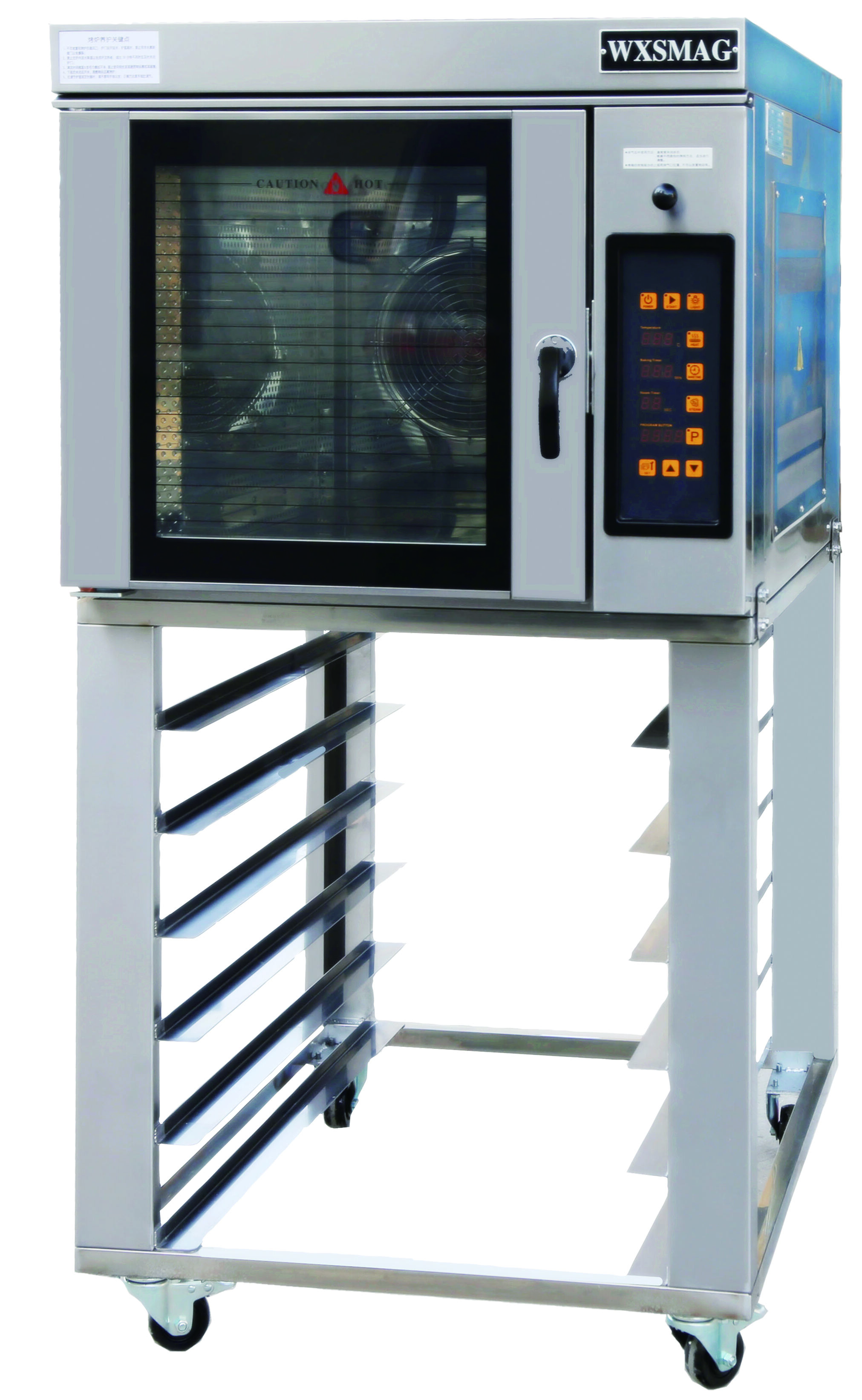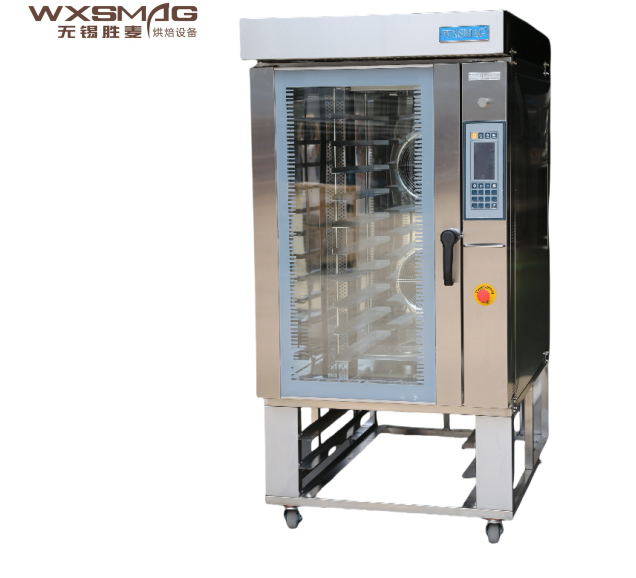Understanding Commercial Convection Oven Dimensions and Their Impact on Kitchen Operations
In the fast-paced world of commercial kitchens, the selection of proper equipment can make or break operational efficiency. At the heart of many professional kitchens lies the convection oven, a versatile and essential piece of equipment whose size and capacity directly influence cooking performance, output, and overall kitchen workflow. From small cafes to large-scale catering operations, understanding how dimensions and capacity affect performance is crucial for making informed decisions that impact both food quality and business success.
The relationship between a convection oven's size and its performance is more complex than simply choosing the largest model available. Various factors including kitchen space utilization, energy efficiency, and specific cooking requirements must be carefully considered to optimize kitchen operations. This comprehensive guide explores the intricate connection between convection oven dimensions and commercial kitchen success.
Physical Dimensions and Space Optimization
Footprint Considerations in Kitchen Layout
The physical footprint of a convection oven plays a crucial role in kitchen design and workflow efficiency. Commercial convection ovens typically range from compact countertop models to large floor-standing units that can occupy significant space. When evaluating space requirements, kitchen managers must consider not only the oven's dimensions but also necessary clearance for ventilation, maintenance access, and operator movement.
Strategic placement within the kitchen layout ensures smooth workflow patterns and prevents bottlenecks during peak service hours. A properly sized convection oven should allow staff to move freely while maintaining efficient access to other essential equipment and prep areas. The relationship between oven size and available space directly impacts staff productivity and comfort during long operating hours.
Vertical Space Utilization and Stacking Options
Modern commercial kitchens often maximize vertical space by stacking convection ovens. This arrangement can effectively double or triple cooking capacity without expanding the floor footprint. However, vertical configurations require careful consideration of ceiling height, ventilation requirements, and ergonomic access for staff members of varying heights.
When implementing stacked configurations, it's essential to ensure that each oven maintains optimal performance without compromising air circulation or temperature consistency. The combined weight and structural requirements of stacked units must also be evaluated to guarantee safe and stable operation.
Internal Capacity and Production Volume
Chamber Size and Pan Accommodation
The internal chamber dimensions of a convection oven determine its pan capacity and directly affect production volume. Standard commercial convection ovens can accommodate various combinations of full-size, half-size, or quarter-size sheet pans. Understanding your operation's specific pan requirements helps in selecting an oven with appropriate internal dimensions.
Larger chamber sizes allow for greater batch cooking capabilities but may require longer heating times and more energy consumption. Conversely, smaller chambers heat up quickly and offer more precise temperature control, making them ideal for operations requiring frequent menu changes or specialized cooking tasks.
Multi-Rack Efficiency and Loading Patterns
The number and spacing of racks within a convection oven impact both capacity and cooking performance. Professional kitchens must balance maximum rack utilization with proper air circulation to ensure even cooking results. Optimal rack spacing varies depending on the types of foods being prepared and their specific heating requirements.
Strategic loading patterns and rack utilization techniques can significantly enhance production efficiency. Understanding how different food items respond to rack positioning helps kitchen staff maximize the oven's capacity while maintaining consistent cooking results across multiple levels.
Performance Metrics and Operating Efficiency
Heat Distribution and Recovery Time
The size of a convection oven directly influences its heat distribution characteristics and temperature recovery time. Larger ovens typically require more powerful heating elements and fans to maintain consistent temperatures throughout the cooking chamber. The relationship between chamber size and heating system capacity must be properly balanced to ensure optimal performance.
Temperature recovery time becomes particularly critical during high-volume service periods when the oven door is frequently opened. Larger ovens generally experience more significant temperature fluctuations and longer recovery times, which must be factored into production scheduling and timing considerations.

Energy Consumption and Cost Considerations
The correlation between oven size and energy efficiency is a crucial factor in operational costs. Larger convection ovens consume more energy to maintain cooking temperatures but may offer better efficiency when operating at full capacity. Understanding the relationship between size, power consumption, and production volume helps kitchen managers optimize energy usage and operating costs.
Modern convection ovens often incorporate energy-saving features such as improved insulation and smart controls to enhance efficiency regardless of size. These features can significantly impact long-term operating costs and should be considered alongside initial capacity requirements.
Maintenance and Longevity Considerations
Cleaning and Sanitization Requirements
The size and capacity of a convection oven directly affect cleaning and maintenance requirements. Larger units require more time and resources for thorough cleaning, while multiple rack levels and complex internal components can make access challenging. Establishing effective cleaning protocols based on oven size ensures proper sanitation and prolonged equipment life.
Regular maintenance schedules must account for the increased complexity and component wear associated with larger ovens. Professional cleaning services and maintenance contractors should be consulted to develop appropriate care routines based on oven dimensions and usage patterns.
Component Durability and Service Access
Larger convection ovens typically contain more complex mechanical systems and components, which can affect long-term durability and service requirements. The relationship between size and component stress must be considered when evaluating expected equipment lifespan and maintenance costs. Access points for service and repair become increasingly important as oven size increases.
Understanding the maintenance implications of different oven sizes helps kitchen managers plan for routine service and potential repairs. Proper documentation of maintenance procedures and service requirements ensures consistent performance regardless of oven dimensions.
Frequently Asked Questions
How much clearance space is needed around a commercial convection oven?
Commercial convection ovens typically require minimum clearances of 6 inches on sides and back for proper ventilation, with additional space needed in front for door operation and staff access. These requirements may vary based on manufacturer specifications and local building codes.
What is the optimal rack spacing for consistent cooking results?
Most commercial convection ovens perform best with 3-4 inches of space between racks to allow proper air circulation. This spacing may need adjustment based on specific food items and cooking requirements to ensure even heat distribution and consistent results.
How does oven size affect energy efficiency ratings?
Larger convection ovens generally consume more energy but may offer better efficiency when operating at full capacity. Energy efficiency ratings should be evaluated based on typical production volumes and usage patterns rather than size alone. Modern energy-saving features can help offset the increased power requirements of larger units.

